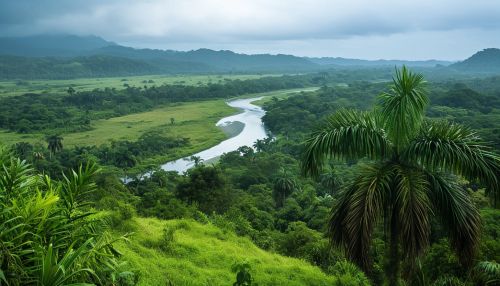Panama
Geography
Panama, officially known as the Republic of Panama, is a transcontinental country located in Central America and South America. It is bordered by Costa Rica to the west, Colombia to the southeast, the Caribbean Sea to the north, and the Pacific Ocean to the south. The capital and largest city is Panama City, which is home to nearly half of the country's 4 million residents.


Panama's geography is marked by a diverse range of landscapes, including mountain ranges, tropical rainforests, and coastal plains. The country's highest point is the Volcan Baru, a dormant volcano that reaches an elevation of 3,474 meters.
History
The history of Panama dates back to the earliest human inhabitants, the Cueva people, who lived in the region as far back as 11,000 years ago. The Spanish explorer Rodrigo de Bastidas was the first European to explore the region in 1501, and Panama soon became a vital part of Spain's New World Empire.
In the 19th century, Panama gained independence from Spain and eventually joined the Gran Colombia, a federation of several South American nations. However, Panama seceded from Colombia in 1903, with the support of the United States, and became an independent nation.
Economy
Panama's economy is one of the most stable and prosperous in Latin America, with a high-income economy, a well-developed service sector, and strong economic growth rates. The Panama Canal, a 77.1-kilometer waterway that connects the Atlantic and Pacific Oceans, plays a crucial role in the country's economy, facilitating international maritime trade.
Other significant sectors of Panama's economy include finance, commerce, tourism, and agriculture. The country is also known for its advanced infrastructure, particularly in Panama City, which boasts a modern skyline of high-rise buildings and condominiums.
Culture
Panama's culture is a blend of indigenous, African, and Spanish influences, reflecting the country's diverse history and population. Traditional music and dance, such as the Cumbia, Saloma, and Tamborito, play a significant role in cultural celebrations.
The country is also known for its vibrant arts scene, with numerous galleries, festivals, and events dedicated to promoting Panamanian art and artists. Literature is also a significant part of Panamanian culture, with notable authors including Rogelio Sinan and Gloria Guardia.
